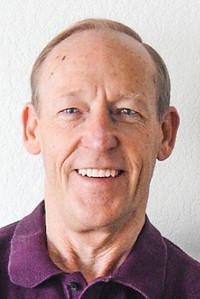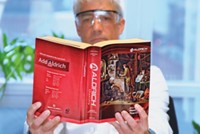Advertisement
Grab your lab coat. Let's get started
Welcome!
Welcome!
Create an account below to get 6 C&EN articles per month, receive newsletters and more - all free.
It seems this is your first time logging in online. Please enter the following information to continue.
As an ACS member you automatically get access to this site. All we need is few more details to create your reading experience.
Not you? Sign in with a different account.
Not you? Sign in with a different account.
ERROR 1
ERROR 1
ERROR 2
ERROR 2
ERROR 2
ERROR 2
ERROR 2
Password and Confirm password must match.
If you have an ACS member number, please enter it here so we can link this account to your membership. (optional)
ERROR 2
ACS values your privacy. By submitting your information, you are gaining access to C&EN and subscribing to our weekly newsletter. We use the information you provide to make your reading experience better, and we will never sell your data to third party members.
Synthesis
Take One For A Test Drive
Many new chiral catalysts find a commercial home in research chemical catalogs
by Ann M. Thayer
August 4, 2008
| A version of this story appeared in
Volume 86, Issue 31
IN RECENT DECADES, the push to develop new catalysts for making chiral compounds has generated thousands of ligands. And there's a small circle of laboratory chemical suppliers willing to give the best of those molecules a home.
The flood of chiral ligands is justified by both scientific and business rationales. The chemical reasoning is simply that different catalysts direct different transformations. Many catalysts arose as interesting results from university labs. Having a range of catalysts improves the odds that one can be found to work in a given reaction with a specific substrate.
From a commercial perspective, fine chemicals and pharmaceutical producers invent catalysts to synthesize new products and to do so unhindered by others' patents on processes and materials.
But not all of the thousands of chiral catalysts are or ever will be useful, much less employed on an industrial scale. And no catalyst supplier is going to make them in large quantities if the market doesn't warrant it.
Just like the tiny sample spoonful you get at the ice cream store, this is the marketing logic behind selling very small quantities through research chemical suppliers such as Acros Organics, Alfa Aesar, Sigma-Aldrich, and Strem Chemicals. Products can be tried out in R&D, hopefully to become essential in a reaction and then purchased in large amounts for production needs.
Chemists like the research catalogs because they provide a way to test-drive the best catalysts to solve their synthesis problems. They could make their own, but in these days of high-throughput experimentation, it no longer makes sense to synthesize each and every catalyst by hand because of the number needed for reaction screening. Industrial scientists in particular are pressed for time and will often gladly pay for quick access to research materials.
To address these needs, catalyst suppliers put together kits of their ligand libraries. Aldrich and Strem, for example, offer kits from Chiral Quest, DSM, Evonik Industries, Solvias, and Takasago, makers of some of the better-known ligands.
Selling individual ligands or ligand kits from catalyst suppliers can be a simple distribution agreement. Other times, a research chemical supplier may license a patent so that it can produce the materials. Depending on the arrangement, either the catalog firm or the catalyst developer may provide larger amounts if requested.
Strem has specialized in organometallic complexes, catalysts, and ligands since 1964, according to Ephraim S. Honig, the company's chief operating officer. This focus made Strem an attractive outlet when the field of asymmetric catalysis began growing rapidly in the 1990s. At conferences and trade shows, you'll see Honig, a chemistry Ph.D., interacting with academic and industrial scientists.
In addition to commercial catalyst suppliers, university labs are increasingly the source of catalysts found in the research chemical catalogs. To find ones to offer, Aldrich Product Manager William Sommer, who has a doctorate in chemistry, follows the literature, attends conferences, meets with companies, and talks with a network of contacts to find interesting catalysts and then see whether Aldrich can make or license them.
Product managers also use resources within their companies. "Anyone who is in science here—be it a person in R&D, quality control, or a product manager—can contribute ideas," says Daniel Weibel, an Aldrich product manager based in Switzerland, where he earned his doctoral degree. Sales people also bring in ideas from customers, and researchers can submit requests directly for products they'd like to see offered.
All this input, Weibel says, "is pooled and reviewed by the product managers, and then the decision is made whether it is worth proceeding and putting it into a catalog." Sommer handles all types of catalysts and inorganic complexes, whereas Weibel focuses on chiral chemistry in general, including catalysts, building blocks, resolving agents, and auxiliaries. With help from technical and business development teams, they create Aldrich's chiral catalyst catalog offerings.
Weibel says the first review step is simply to ask: "Is it really one of the best catalysts available for a certain transformation or not?" What's offered also reflects the state of the science. Aldrich's catalog of organocatalysts, for example, has grown substantially over the past few years as the field has blossomed.
"We also try to cover as many catalysts as possible just to make sure we offer as much as we can to our customers," Sommer adds. "You'll see a lot of similar ligands with little tweaks or variations to change the reactivity, and that is to give the customer a huge range for testing."
In their catalogs, the research chemical firms also publish supporting information, articles, and scientific references. This information helps identify useful reactions and show a catalyst's utility. Many ligands bear names created by the inventors or even the name of an academic researcher, especially the recognizable ones. Examples include the Trost, Reetz, and Landis ligands and, in organocatalysis, the MacMillan, Jacobsen, and Maruoka catalysts.
Often a researcher will have little to do with actually licensing a catalyst because the process is usually handled by a university technology-transfer office. For example, the asymmetric hydroformylation catalysts developed by Clark Landis at the University of Wisconsin fall under joint patents held by the university and his collaborators at Dow Chemical, which licensed them to Aldrich.
Similarly, David MacMillan at Princeton University says his imidazolidinone catalysts were licensed by Aldrich from the catalysis company Materia and the University of California, Berkeley, where he started his career. Since then, however, he says most of his organocatalysts have not been patented.
In organocatalysis, many catalysts are simple organic structures or older known compounds. "The field is so busy and there is so little elbow room that it is hard for anyone to claim that they invented anything," MacMillan says. "So my impression is that there?s not a lot of patenting going on."
Researchers often express the sentiment about simply wanting people to be able to use their inventions. "I'm just happy for people to actually use our chemistry," MacMillan says. "My lab has a triisopropylsilylvinyl phosphonic acid catalyst we call 'TiPSY' that we use all the time. It's not patented and Aldrich makes and sells it."
At the same time, university licensing offices are interested in patenting and generating income from professors' inventions. Sales of small quantities of a given research chemical, however, are likely to be small. But marketing them through a catalog can, Sommer says, "help make a technology accessible to most of the scientists in the world, which in turn can generate money if at some point it is used on a huge scale."






Join the conversation
Contact the reporter
Submit a Letter to the Editor for publication
Engage with us on Twitter